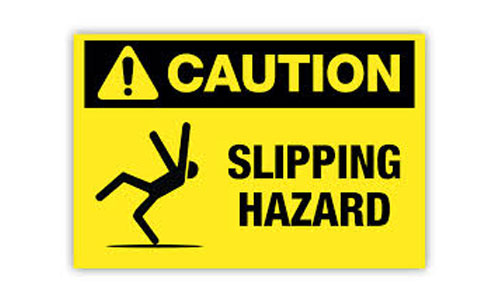
In the U.S., up to 10,000 people are seen in the emergency room daily as a result of sports related injuries. Many injuries are because of falling, or more specifically, from using an improper falling technique. Learning to fall safely may prevent painful, sometimes serious injuries. There are general principles as well as more specific to sport activities that you will find interesting and effective. Here are some important tips:
- Crouch down if you feel yourself losing your balance, so you won’t have as far to fall.
- Avoid the reflex to catch yourself with your hands when you fall. Instead, try to land on the fleshy parts of the body and roll.
- Relax your body rather than stiffening up.
- Avoid a face plant. Tuck your chin and turn your head.
- Sidestep trouble: In mid fall, twist or roll your body to the side (it’s safer to land on your butt and side – more “padding” than on your back).
- Go for an even landing. Keep wrists straight and elbows and knees bent and draw them in close to your body. Try to spread out the forces of impact by landing with as much of your core body as you can.
My son is taking Parkour, which is a very active sport, and he has learned how to safely fall. One such technique is called The Parkour Ukemi. Ukemi is a Japanese name that means literally “receiving (with/through) the body.” In martial arts, it refers to “the art of falling” on different types of hard surfaces. While Parkour can be a dangerous sport, the teaching of falling safely is a useful tool for any sport, age group or lifestyle. Parkour Ukemi teaches a basic beginner roll, called the ‘Triangle to Back Method’ that helps to prevent injuries to the neck, spine, shoulder and wrist. This is a low-impact modified version of the gymnast roll.
The basic points of the Triangle to Back Roll are:
- Relax – It sounds impossible to relax, but if you stiffen up, the chances of getting hurt rise.
- Tuck – Tuck your chin in and look at your stomach.
- Reach Out to the Side – Instead of reaching straight out in front, reach out slightly to the side and in front, arms to the side that you intend to roll towards.
- Put Palms Down Flat – Put your hands flat down creating a triangle shape by touching together the pointer fingers and thumbs from both hands. This creates a position that makes your elbows bend and your arms absorb the impact.
- Tuck Your Shoulder In – Whatever shoulder you chose to start your roll with, turn it inwards to avoid putting the hard impact directly on top of the shoulder and incurring a broken shoulder or collarbone.
- Roll Diagonally Across Your Spine – Instead of rolling from your neck straight down your spine and hitting all the vertebrae, tuck your shoulder in and roll from your shoulder diagonally across your spine to your hip.
- Practice Rolling Onto Both Sides – Practice using both sides in preparation for a realistic fall. (1)
As we all know, you usually don’t have time to “think” before you fall. But a patient recently told me in a split second he was able to remember to crouch down and feels it helped avoid further injury. If you can learn even one of these tips, it may make all the difference.

